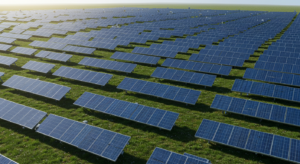Planting the Future: Policies, Regulations, and the Rise of Green Infrastructure in Urban Planning
Introduction
In the wake of growing urbanization, cities are embracing green infrastructure (GI) as a critical part of urban planning. Integrating GI practices into urban environments is key to sustainable urban development, improving air quality, enhancing water quality, and fostering resilience. This article delves into the policies and regulations driving this green surge in urban areas, examining the multifaceted benefits of green infrastructure.

Green Infrastructure: A New Approach to Urban Planning
1. What is Green Infrastructure?
Green infrastructure includes urban green spaces, green roofs, green streets, urban forestry, and other elements that provide multiple functions and benefits within urban ecosystems. These features support urban sustainability and can replace or complement traditional gray infrastructure.
2. Urban Green Infrastructure Planning
GI planning encompasses various strategies to integrate green infrastructure into urban design, including green corridors, urban parks, and urban tree planting. Planning efforts require a multifaceted approach to include green elements within urban systems.

Policies and Regulations Driving Green Infrastructure
1. Green Infrastructure on Private Property
Many cities have established guidelines for green infrastructure investments on private property, such as incentives for green roof installation or urban green space development.
2. Clean Water Act Regulations
Regulations like the Clean Water Act have driven stormwater management through green stormwater infrastructure, encouraging cities across the United States to implement urban GI practices.
3. Diverse Planning Strategies
From spatial planning to regional planning, different types of planning approaches are being used to incorporate green and blue infrastructure, creating diverse urban landscapes that support green infrastructure goals.
4. Enabling Green Infrastructure through Urban Policy
Incorporating GI into city planning documents and planning instruments supports comprehensive green infrastructure and fosters equitable urban development.
Green Infrastructure Programs and Practices
1. Green Infrastructure A Universal Good
Programs that view green infrastructure as a universal good help create inclusive, resilient, and sustainable urban environments.
2. Urban Heat Island Mitigation
Urban heat island effects are reduced through urban forestry, green roofs, and other urban greening practices.
3. Transportation Infrastructure
Green streets and other transportation infrastructure enhancements integrate green infrastructure within urban space, improving the overall urban environment.
4. Housing and Urban Development
The Department of Housing and Urban Development and other entities are enabling green infrastructure by incorporating it into housing and urban projects.
Conclusion
Green infrastructure is reshaping cities, providing economic benefits and enhancing the quality of life for urban residents. The implementation of green infrastructure is guided by policies and regulations that are as diverse and multifunctional as the green areas they foster.
With many urban centers prioritizing GI planning and investments, the push for green infrastructure in urban planning represents a significant shift towards more resilient, healthy, and sustainable urban living. The collaboration between local governments, urban designers, and residents is key to achieving the urban sustainability goals of 20 US cities and beyond.
From urban heat island mitigation to stormwater runoff management, green infrastructure practices are providing vital solutions to current urban challenges. It’s time for cities to fully embrace green infrastructure as a fundamental part of their urban fabric, reaping the benefits that this new approach to urban planning can provide.




